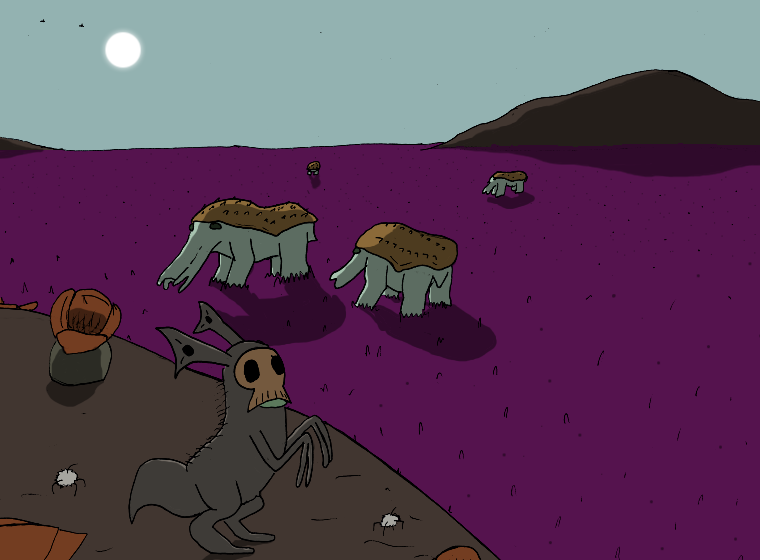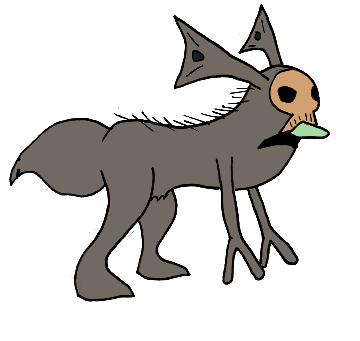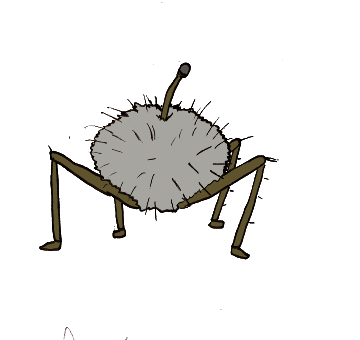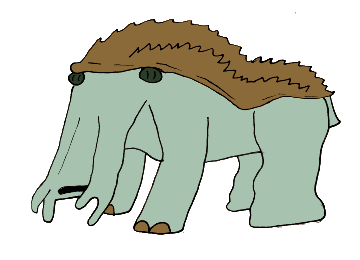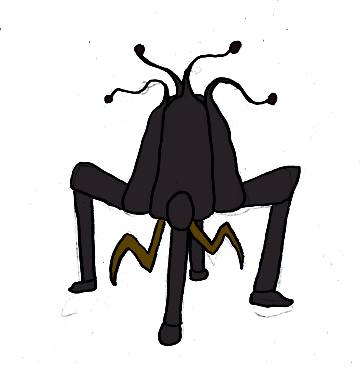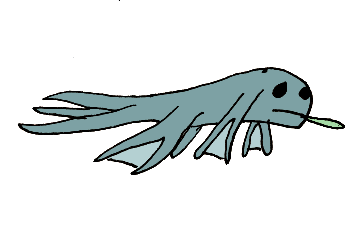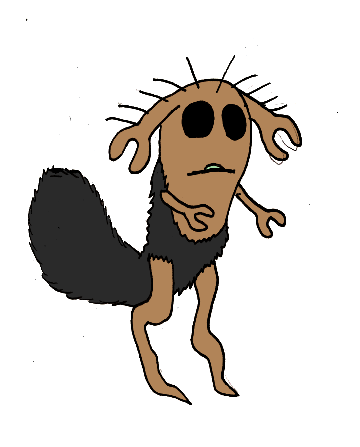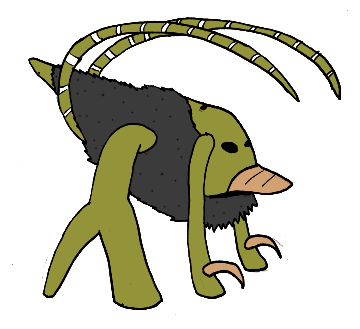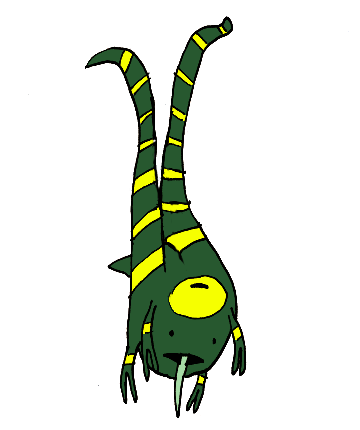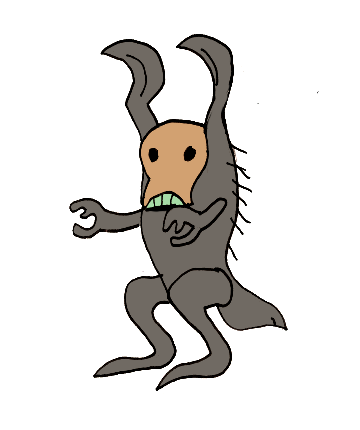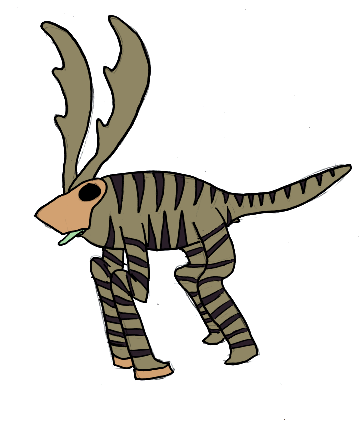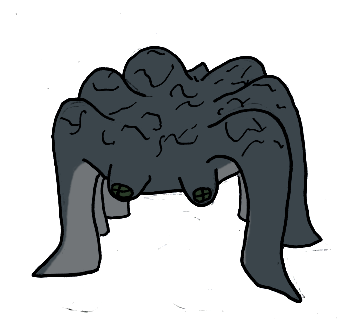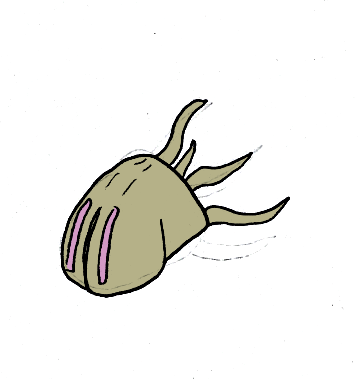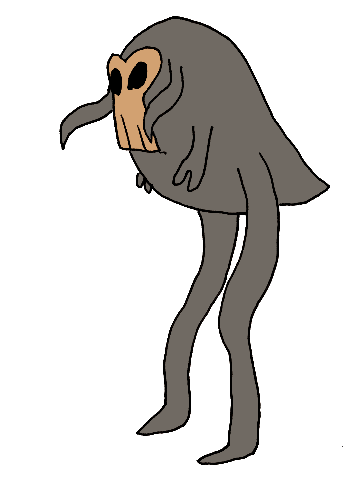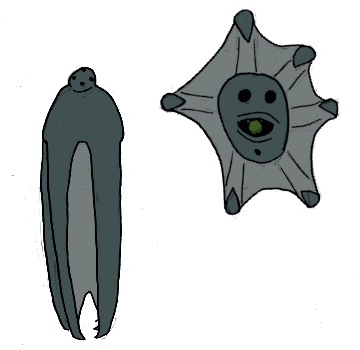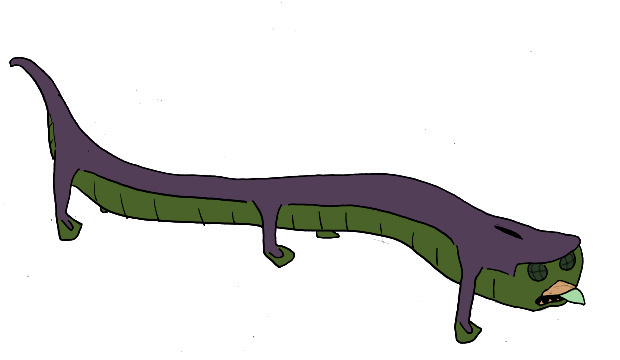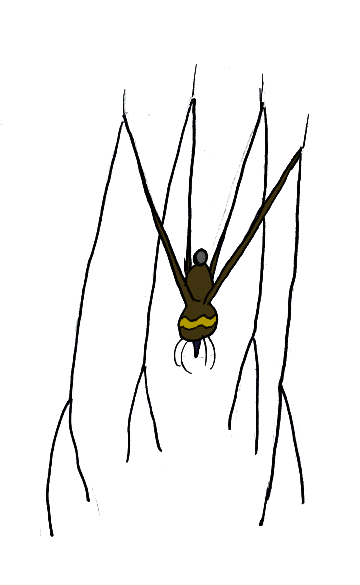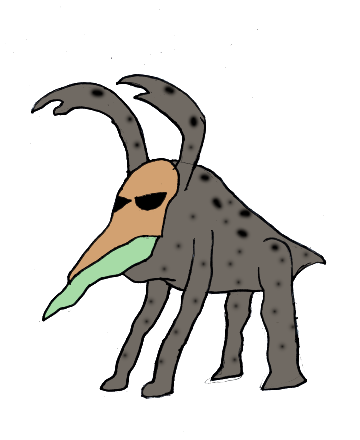Planet Gurx: Reactive Devices
Strondovarian culture is all about keeping up to date on the latest information from the Knowledge Base, so it is important to have a constant connection to that source. While every home and building on Gurx would have built in terminals and relays that are active at all times. But what is one to do when not at home? What if you’re walking down the street and you need to get in touch with the world? That’s when you’d use a portable device, like this one:
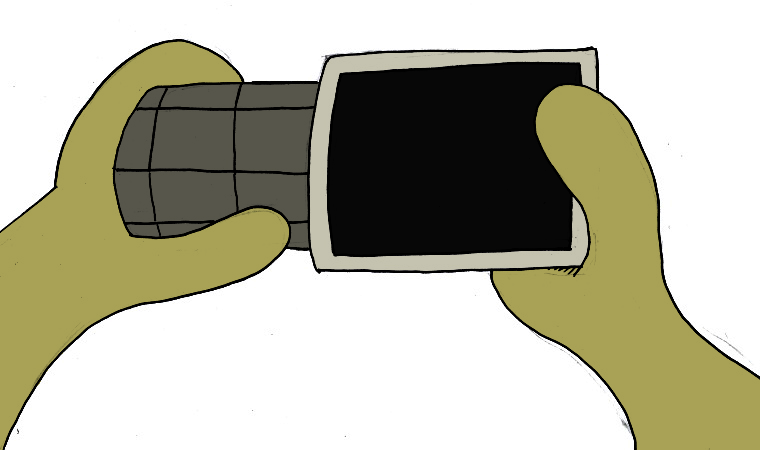
Almost every Strondo you see out and about has a small portable device like this one, which they keep in a fold inside their mouth when not being used. By any door in a Strondo building you’re likely to see a shelf with several such devices to be taken by anyone who needs one while they’re away. And because their hearing organ is also in their mouth, it is not uncommon for them to keep an audio feed on, at low volume, just to stay up to date.
But what’s most important about the technological Strondovarian connections to the Knowledge Base is that they have to recognize the user. It would be inconvenient if a Strondo used the terminal in some public building and could access their own personal information. It would be unthinkable for one Strondo to pose as another and make fraudulent reports to the Knowledge Base. To prevent such things, all technology that connects to the Knowledge Base is reactive to the user.
If you are working on your portable device, but then want to use a wall terminal, you just put down the portable and use the wall terminal. It will instant be displaying the same information you were just looking at on the other portable. And if you hand your portable to your child, it will instantly display that child’s information. A combination of biometrics, and just the fact that the Knowledge Base keeps pretty constant track of who is doing what, means the devices know who is using them and knows what it is supposed to do for each and every user.
(Incidentally, on the topic of Strondo technology: One of the ways humans would be confused by Strondovarian culture is their attitude toward possessions and belongings, such as their portable reactive devices. Strondos just don’t share our human attachment to stuff. If a Strondo isn’t actively using a thing, they see no reason that someone else shouldn’t be allowed to walk up and take it. This attitude has been present in Strondos to some extent since they came to be, but it has truly been cemented in the last ten thousand years or so, with Strondo culture and technology coming into its present form. A Strondo has no need to hold onto a physical copy of a book or a piece of artwork when the Knowledge Base has all the content safely stored and easily shared.)

